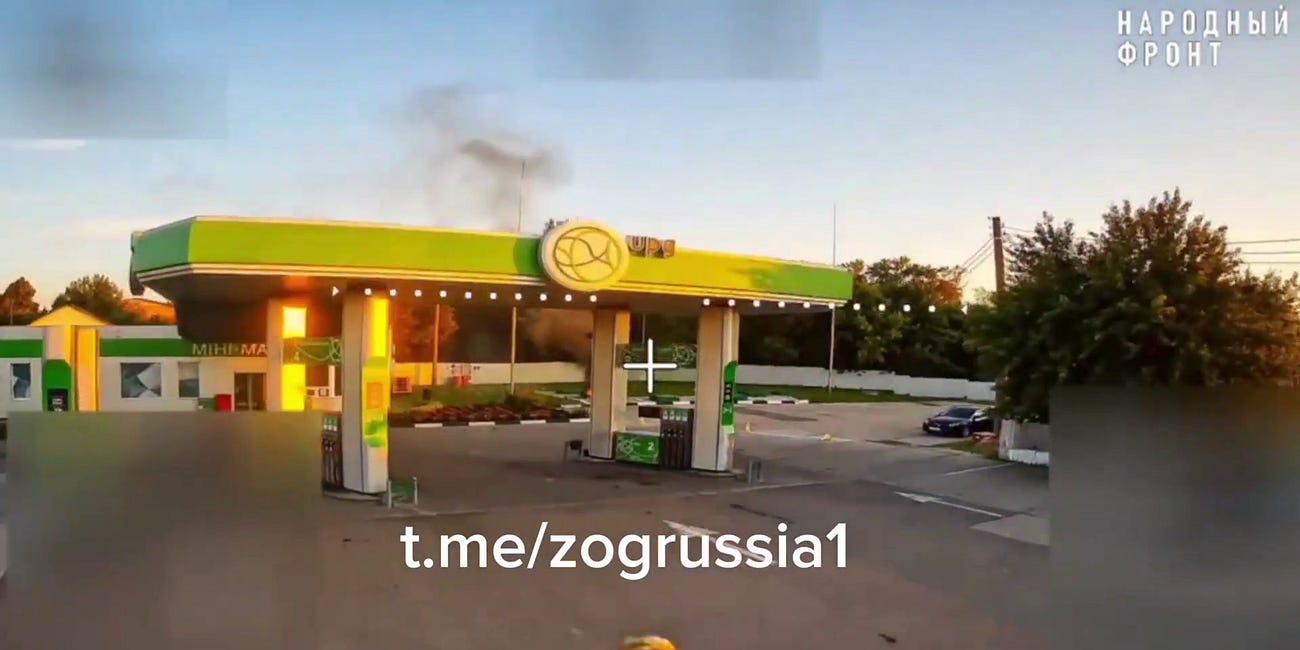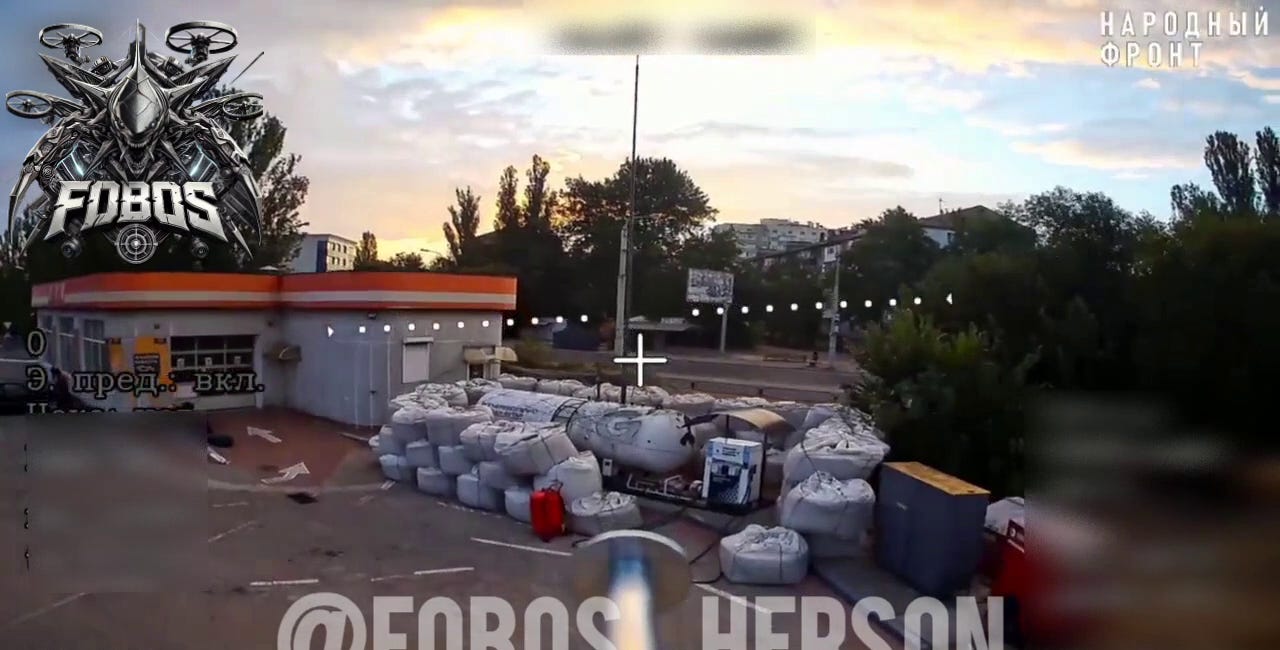Video Documents Questionable And Ineffectual Drone Attack On Gas/Petrol Station
🇷🇺 🇺🇦
As I explained in several recent posts (linked below), armed “first-person video” (“FPV”) multirotor drones facilitate the highly surgical micro-level targeting of fixed—stationary—sites, including critical infrastructure. This includes gas/petrol stations in general and specific fuel pumps and above-ground fuel storage tanks in particular.
"FPV" Drone Strikes Against Petrol/Gas Stations In Russia And Ukraine Highlights Increasing Scope For The Surgical Targeting of Fixed Infrastructure Sites
Note: This post expands on the theme of one of my previous posts. This is an issue area that I take great interest in, and the videos featured in this post are likely to be a harbinger of what is to come in terms of short-range strike capabilities worldwide. Expect additional posts dealing with this theme.
Fiber Optic "FPV" Multirotor Drones Used To Target Petrol/Gas Station Across Dnieper River In Kherson Region
Viewing so-called “First Person Video” (“FPV”) drone footage from the Russia-Ukraine War is often a quite sordid affair. There are, however, several “genres” of “FPV” drone footage that are not only more palatable to non-sadistic audiences by virtue of not (directly) depicting the injuring or killing of any human beings but by offering a window into the…
Additional Footage of "FPV" Drone Strikes Against Petrol/Gas Stations In Ukraine
Viewing so-called “First Person Video” (“FPV”) drone footage from the Russia-Ukraine War is often a quite sordid affair. There are, however, several “genres” of “FPV” drone footage that are not only more palatable to non-sadistic audiences by virtue of not (directly) depicting the injuring or killing of any human beings but by offering a window into the…
While I contend that the videos featured in my prior posts reflect the conceptually innovative use of such “micro strike munitions” on the part of a small number of Russian multirotor drone units, there are many questionable—difficult-to-explain—incidents in the Russia-Ukraine War. The following video, which records the aftermath of what is said to be a Russian Molniya propeller-driven fixed-wing “FPV” drone strike on a Ukrainian gas/petrol station located some 28 kilometers from the frontlines in Ukraine’s Dnipropetrovsk province, offers a case in point.
While the specific circumstances behind this incident are not public knowledge, this particular incident verges on absurdity, given that the roof of a gas/petrol station is not used to store any fuel, unlike, for example, the wings of many large fixed-wing aircraft designs. While a fairly large and heavy munition with a large destructive radius can render a gas/petrol station wholly unusable, munitions that are equipped with a warhead weighing just several kilograms lack such destructive effects, and must, therefore, be accurately and precisely used to attack discrete aimpoints. When it comes to targeting gas/petrol stations, the only aimpoints worth expending a munition on are the fuel pumps, which must be attacked one at a time, above-ground fuel tanks, and any equipment used to facilitate the underground storage of fuel. Unless large external fuel tanks are present, this requires considerable accuracy, which, in effect, rules out the practical use of a fixed-wing human-guided munition against such discrete aimpoints. Armed “FPV” multirotor drones of the fiber-optic communication uplink/downlink variety are, however, very well suited to attacking local fuel storage and distribution facilities that are located some 20-30 kilometers from the frontline, and we are likely to have additional documented cases of use going forward.




